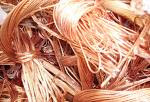 To be a successful scrap metal dealer you must be able to handle large orders – constantly and consistently. You must be able to pay for the scrap metal costs in advance (and at the best prices) and then wait 30 to 60 days until the transaction is settled to get your investment and profit back. However, few scrap metal traders can handle many large orders at a time while waiting 30 to 60 days to get paid. Therein lies the problem.
To be a successful scrap metal dealer you must be able to handle large orders – constantly and consistently. You must be able to pay for the scrap metal costs in advance (and at the best prices) and then wait 30 to 60 days until the transaction is settled to get your investment and profit back. However, few scrap metal traders can handle many large orders at a time while waiting 30 to 60 days to get paid. Therein lies the problem.Many dealers try to go to the bank hoping to get business financing. However, they soon discover that most banks don’t understand the recycled scrap metal business well and don’t have the right solutions for the industry. Furthermore, getting bank financing is especially hard since banks require that you show three years of profitable business history and have sizeable collateral before making a loan.
Either way, banks loans don’t always work well for scrap metal dealers. In this industry, once you find the best scrap metal prices, you must move quickly to seal the deal. A better solution than bank financing is to use purchase order financing.
Purchase order funding provides you with the necessary funds to execute your confirmed POs. It provides you the financing to pay scrap metal suppliers, enabling you to deliver the goods and close the sale. Purchase order financing is easy to use and works as follows:
1. The scrap metal dealer / trader secures a purchase order from a customer
2. The purchase order finance company then pays the scrap metal costs from the supplier yard (usually by placing a deposit or using a letter of credit)
3. The yard delivers the scrap metal to the customer according to the order
4. Once the customer pays for the scrap metal, the transaction is settled
Purchase order financing has a number of advantages over conventional bank financing. First, it’s very easy to obtain. The biggest requirement is that your company have purchase orders form commercially credit worthy customers. And second, it can be set up quickly. Most of the times you can get the financing in days (rather than months). And as opposed to bank financing, most startups will qualify.
Many times, po financing can be used in combination with factoring financing. Combining these two products can allow your business to fully optimize its cash flow, enabling it to grow at an even faster rate.
Although not widely used, these financing tools are quickly being adopted by growth minded scrap metal dealerships and traders. Be sure to consider them as options the next time your company needs financing.
About Commercial Capital / Invoice Factoring Group
Interested in factoring receivables? We can provide scrap metal dealers with affordable purchase order financing and accounts receivable factoring. For more information call (866) 730 1922.
Article Source: http://EzineArticles.com/?expert=Marco_Terry


